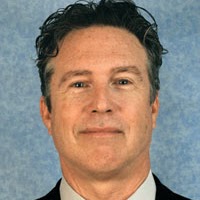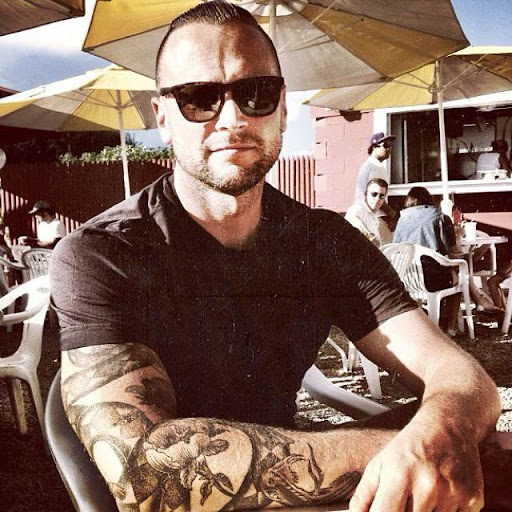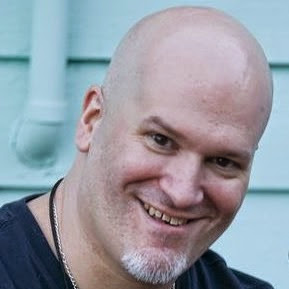David M Root
age ~64
from Hamlin, NY
- Also known as:
-
- David A Root
David Root Phones & Addresses
- Hamlin, NY
- 222 S Transit St, Lockport, NY 14094 • (716)5232414
- Corfu, NY
- 10966 W Shelby Rd, Medina, NY 14103 • (585)3158527
- Somerville, MA
Work
-
Position:Craftsman/Blue Collar
Education
-
Degree:Associate degree or higher
Emails
License Records
David M Root
License #:
63.89.0224 - Active
Issued Date:
Dec 15, 2012
Expiration Date:
Dec 15, 2017
Type:
Ust Tank Installer
License #:
63.89.0224/1 - Active
David P Root
License #:
GF0802940 - Expired
Category:
Mechanical
Expiration Date:
May 31, 2014
Type:
Fuel Gas Service Technician
David B Root
License #:
RS116681A - Expired
Category:
Real Estate Commission
Type:
Real Estate Salesperson-Standard
David G Root
License #:
RS150778A - Expired
Category:
Real Estate Commission
Type:
Real Estate Salesperson-Standard
Us Patents
-
Multi-Well Assembly For Growing Cultures In-Vitro
view source -
US Patent:6943009, Sep 13, 2005
-
Filed:May 15, 2002
-
Appl. No.:10/146831
-
Inventors:William J. Lacey - North Andover MA, US
Gregory Mathus - Concord MA, US
David M. Root - Westford MA, US
John A. Ryan - Clinton MA, US -
Assignee:Corning Incorporated - Corning NY
-
International Classification:C12M001/12
-
US Classification:4352975, 4353052, 422101, 422102
-
Abstract:A high-throughput cell or tissue culture apparatus, which is configurable to an industry-standard well plate format, is provided. The apparatus comprises a number of vessels, which may be suspended in wells of a plate. Each vessel has at least one sidewall defining a first opening and a second opening, each of predetermined cross-sectional area. The second opening has an inner cross-sectional area greater than either the inner cross-sectional area of the first opening or a cross-sectional area in a horizontal plane between the first and second openings. A relatively large substrate area is provided in each vessel for supporting tissue cultures in a fluid medium.
-
Detection Of Reactions And Metabolic Changes With Fluorscent Materials
view source -
US Patent:20030012692, Jan 16, 2003
-
Filed:May 22, 2002
-
Appl. No.:10/154465
-
Inventors:Valerie Lemee - Sausheim, FR
Pascal Marque - Veneux-Ies-Sablons, FR
Marylene Pecheul - Souppes Sur Loing, FR
David Root - Westford MA, US -
International Classification:G01N021/64
-
US Classification:422/057000, 436/172000
-
Abstract:A system, method and device for the detection of reactions between analytes, (e.g., DNA, biomolecules, or cells) and a second compound are disclosed. The present invention includes a coating of a fluorescent material having a fluorescence that changes with temperature. The fluorescent material is associated with a substrate, and can be used for any type of surface reaction that requires determination of temperature conditions at an interface between the surface and the reaction analyte subject to assay. The substrate may be, for example, a microarray chip or microplate, preferably suitable for use in high-throughput screening of biomolecules or cells. Substrates containing the fluorescent material also can be used to compensate for temperature variations in refractive index in optical sensors.
-
Sma Therapy And Cell Based Assay For Identifying Therapies
view source -
US Patent:20040044063, Mar 4, 2004
-
Filed:Jun 2, 2003
-
Appl. No.:10/453143
-
Inventors:Brent Stockwell - Boston MA, US
David Root - Brookline MA, US -
International Classification:A61K031/404
-
US Classification:514/418000
-
Abstract:This invention relates to therapies for diseases involving splicing defects, such as spinal muscular atrophy (SMA), and methods to identify compounds for treating this disease. The invention specifically provides for therapies comprised of small molecule compounds identified by cell-based high-throughput screening assays. These assays utilize engineered splicing constructs that fuse pre-mRNA fragments to a reporter gene. The fragments contain exons and at least one intron of a gene mutated in such a way to cause disease. Additionally, the invention provides for methods to monitor the effects of drugs on splicing and gene expression in vivo, in transgenic animals.
-
Method Of Producing Short Hairpin Library
view source -
US Patent:20070141594, Jun 21, 2007
-
Filed:Oct 11, 2006
-
Appl. No.:11/546019
-
Inventors:Biao Luo - Lexington MA, US
David Root - Brookline MA, US
Xiaoping Yang - Brookline MA, US
Gregory Hinkle - Plymouth MA, US -
International Classification:C40B 40/08
C40B 50/06 -
US Classification:435006000, 435091200
-
Abstract:Described herein is a method of cloning synthetic oligos (including in situ synthesized oligos) into an (one or more) expression vector for library (e.g., shRNA library) production. The oligos are synthesized with one portion of the first stem of the hairpin, followed by a first loop sequence, the complete second stem, a second loop sequence, and finished with the remaining portion of the first stem of the hairpin. The two portions of the first stem anneal to the second stem, juxtaposing the 5′ end close to the 3′ end of the oligo. The methods described herein selected for hairpins with perfectly base-paired stems. After annealing, a ligase is added to the annealed oligos and the base-paired hairpins are preferentially annealed, and ligated, creating closed circular oligos. The now circularized hairpins served as templates for rolling circle amplification using a polymerase with high processivity. One or more primers complementary to the two strands of the amplified double stranded circular hairpins initiate the rolling circle amplification in the presence of a polymerase. Using primers (e.g., a sense and antisense primer), the rolling circle amplification yields double stranded hairpin sequences. These can be digested (e.g., using restriction enzymes) to produce a double-stranded hairpin fragment encoding a single hairpin. The fragment can be cloned into an appropriately digested vector for a variety of uses including expression.
-
Substrates For Isolating, Reacting And Microscopically Analyzing Materials
view source -
US Patent:20080166270, Jul 10, 2008
-
Filed:Jan 23, 2008
-
Appl. No.:12/018600
-
Inventors:Jean I. Montagu - Brookline MA, US
Roger Dowd - Natick MA, US
David Root - Chelmsford MA, US -
International Classification:B01J 19/00
-
US Classification:422102
-
Abstract:An immobilizing device for biological material comprises a rigid support () carrying a substrate layer (′) of polymer having biological immobilizing properties, e.g. for amino and nucleic acids. Substantially solid ultra-thin substrate layers (′) having a thickness less than about 5 micron, preferably between about 0.1 and 0.5 micron, and micro-porous, ultra-thin substrate layers (′) having a thickness less than about 5 micron, preferably less than 3 micron, 2 or 1 micron are shown, which may be segmented by isolating moats M. The substrate layer is on a microscope slide (), round disc (), bio-cassette, at the bottom of a well of a multiwell plate, and as a coating inside a tube. Fluorescence or luminescence intensity and geometric calibration spots () are shown. Reading is enhanced by the intensity calibration spots () to enable normalization of readings under uneven illumination conditions, as when reading by dark field, side illumination mode. The reference spots are shown being printed simultaneously with printing an array of biological spots or with the same equipment. Methods of forming layers of the device include controlled drawing from a bath of coating composition and drying, and spinning of C-D shaped substrates. Post-forming treatment is shown by corona treatment and radiation. Adherent metal oxides (), silica-based materials and other materials are used to unite layers of the composite. In multiwell plates the oxide promotes joining of a bottom plate (′) and upper, well-defining structure () of dissimilar material. The oxides () also provide beneficial opacity to prevent light entering the glass support, for applying potential to the substrate, etc.
-
Sma Therapy And Cell Based Assay
view source -
US Patent:20090031435, Jan 29, 2009
-
Filed:Nov 29, 2007
-
Appl. No.:11/947589
-
Inventors:Brent R. Stockwell - Boston MA, US
David E. Root - Brookline MA, US -
International Classification:A61K 31/4035
A61K 31/555
A61K 31/35
A61K 31/44
A61K 31/545
A61K 31/025
G01N 33/00
C12Q 1/68
G06Q 50/00 -
US Classification:800 3, 514416, 514188, 514456, 514283, 514201, 514766, 435 6, 705 2
-
Abstract:This invention relates to therapies for diseases involving splicing defects, such as spinal muscular atrophy (SMA), and methods to identify compounds for treating this disease. The invention specifically provides for therapies comprised of small molecule compounds identified by cell-based high-throughput screening assays. These assays utilize engineered splicing constructs that fuse pre-mRNA fragments to a reporter gene. The fragments contain exons and at least one intron of a gene mutated in such a way to cause disease. Additionally, the invention provides for methods to monitor the effects of drugs on splicing and gene expression in vivo, in transgenic animals.
-
Substrates For Isolating, Reacting And Microscopically Analyzing Materials
view source -
US Patent:20100311614, Dec 9, 2010
-
Filed:Jun 15, 2010
-
Appl. No.:12/815832
-
Inventors:Jean I. Montagu - Brookline MA, US
Roger Dowd - Natick MA, US
David Root - Chelmsford MA, US -
Assignee:AVANTRA BIOSCIENCES CORPORATION - Boston MA
-
International Classification:C40B 40/02
B05D 3/06
B05D 3/02
B05D 1/18
C40B 40/00
C40B 40/06
C40B 40/08
C40B 40/10 -
US Classification:506 14, 427533, 427551, 427553, 427224, 427384, 4274301, 506 13, 506 16, 506 17, 506 18, 506 40
-
Abstract:An immobilizing device for biological material comprises a rigid support () carrying a substrate layer (′) of polymer having biological immobilizing properties, e.g. for amino and nucleic acids. Substantially solid ultra-thin substrate layers (′) having a thickness less than about 5 micron, preferably between about 0.1 and 0.5 micron, and microporous, ultra-thin substrate layers (′) having a thickness less than about 5 micron, preferably less than 3 micron, 2 or 1 micron are shown, which may be segmented by isolating moats M. The substrate layer is on a microscope slide (), round disc (), bio-cassette, at the bottom of a well of a multiwell plate, and as a coating inside a tube. Fluorescence or luminescence intensity and geometric calibration spots () are shown. Reading is enhanced by the intensity calibration spots () to enable normalization of readings under uneven illumination conditions, as when reading by dark field, side illumination mode. The reference spots are shown being printed simultaneously with printing an array of biological spots or with the same equipment. Methods of forming layers of the device include controlled drawing from a bath of coating composition and drying, and spinning of C-D shaped substrates. Post-forming treatment is shown by corona treatment and radiation. Adherent metal oxides (), silica-based materials and other materials are used to unite layers of the composite. In multiwell plates the oxide promotes joining of a bottom plate (′) and upper, well-defining structure () of dissimilar material. The oxides () also provide beneficial opacity to prevent light entering the glass support, for applying potential to the substrate, etc.
-
Substrates For Isolating, Reacting And Microscopically Analyzing Materials
view source -
US Patent:20120129713, May 24, 2012
-
Filed:Oct 13, 2011
-
Appl. No.:13/272980
-
Inventors:Jean I. Montagu - Brookline MA, US
Roger Dowd - Natick MA, US
David Root - Chelmsford MA, US -
International Classification:C40B 30/04
B05D 1/36
C40B 60/12
B05D 1/18 -
US Classification:506 9, 4274301, 427404, 506 39
-
Abstract:An immobilizing device for biological material comprises a rigid support () carrying a substrate layer () of polymer having biological immobilizing properties, e.g. for amino and nucleic acids. Substantially solid ultra-thin substrate layers () having a thickness less than about 5 micron, preferably between about 0.1 and 0.5 micron, and micro-porous, ultra-thin substrate layers () having a thickness less than about 5 micron, preferably less than 3 micron, 2 or 1 micron are shown, which may be segmented by isolating moats M. The substrate layer is on a microscope slide (), round disc (), bio-cassette, at the bottom of a well of a multiwell plate, and as a coating inside a tube.
Isbn (Books And Publications)

Medicine Doctors

David E. Root
view sourceSpecialties:
Occupational Medicine
Work:
Sacramento Occupational Medical Group
1550 Hbr Blvd STE 110, West Sacramento, CA 95691
(916)3729893 (phone), (916)3720630 (fax)
Sacramento Occupational Medical Group
5665 Power Inn Rd STE C120, Sacramento, CA 95824
(916)3876929 (phone), (916)3876977 (fax)
1550 Hbr Blvd STE 110, West Sacramento, CA 95691
(916)3729893 (phone), (916)3720630 (fax)
Sacramento Occupational Medical Group
5665 Power Inn Rd STE C120, Sacramento, CA 95824
(916)3876929 (phone), (916)3876977 (fax)
Education:
Medical School
Wake Forest University School of Medicine
Graduated: 1962
Wake Forest University School of Medicine
Graduated: 1962
Languages:
English
Spanish
Spanish
Description:
Dr. Root graduated from the Wake Forest University School of Medicine in 1962. He works in Sacramento, CA and 1 other location and specializes in Occupational Medicine.
Name / Title
Company / Classification
Phones & Addresses
Owner
Cumin & Copper Inc
Eating Place Drinking Place
Eating Place Drinking Place
4914 Lk Shr Rd, Hamburg, NY 14075
(716)6275551
(716)6275551
Vice-President
Ironwood Equity
Personal Credit Institution
Personal Credit Institution
18 Tremont St, Boston, MA 02108
(617)7427600
(617)7427600
VP Sales
Fund Quest Incorporated
Investment Advisory Service Security/Commodity Service Information Retrieval Services
Investment Advisory Service Security/Commodity Service Information Retrieval Services
1 Winthrop Sq, Boston, MA 02110
DB ROOT CONSULTING, LLC
GENX TESTING, INC
Director
The Broad Institute Inc
Noncommercial Research Organization
Noncommercial Research Organization
7 Cambridge Ctr, Cambridge, MA 02142
(617)7147000
(617)7147000
Director
Addgene
Biotechnology · Commercial Physical Research · Noncommercial Research Organization · Research & Development in Biotechnology
Biotechnology · Commercial Physical Research · Noncommercial Research Organization · Research & Development in Biotechnology
1 Kendall Sq STE B7102, Cambridge, MA 02139
(617)2259000
(617)2259000
Manager
Harvard College
Religious Organization College/University · School/Educational Services
Religious Organization College/University · School/Educational Services
42 Francis Ave, Cambridge, MA 02138
(617)4950710, (617)4954495
(617)4950710, (617)4954495
Plaxo

David Root
view sourceNew York, NY

David Root
view sourcePresident at Sac Physicians Medical Group Manageme...

David Root
view sourceRetired

David Root
view sourceLongmont, CO

David Root
view sourcePioneer painting Remodeling
Classmates

David Root
view sourceSchools:
Middletown Area High School Middletown PA 1971-1975
Community:
Tina Wilken, Ann Wert, Owen Hannah

David Root
view sourceSchools:
Nescopeck High School Nescopeck PA 1951-1955
Community:
Ann Shepherd, Kathleen Penles, Norman Foster

David Root
view sourceSchools:
Spencerville High School Spencerville OH 1995-1999
Community:
Cindy Potts, Trenton Battle, James Beckett, Mary Bart

David Root
view sourceSchools:
Moshannon Valley High School Houtzdale PA 1972-1976
Community:
Chester Haywood

David Root
view sourceSchools:
Ascension Academy Alexandria VA 1964-1968
Community:
Billy Mcgill, Wendy Hill

David Root
view sourceSchools:
Montpelier High School Montpelier VT 1967-1971
Community:
Gary Macpherson, Frank Shirley

David Root
view sourceSchools:
Glorietta Elementary School Orinda CA 1961-1968, Inland Valley School Orinda CA 1968-1970
Community:
Debra Hartman, Sondra Mcvay

David Root
view source
David G Root
view source
David Fowler Root
view source
David J Root
view source
Bradley David Root
view source
Darren David Root
view source
David A. Root
view source
David G. Root
view sourceMylife
Youtube
Myspace
Flickr
Googleplus

David Root
Work:
Cases2Go - President (1982)
Professional Packing & Crating - Owner (1983-2000)
Professional Packing & Crating - Owner (1983-2000)
Education:
University of South Florida - MBA, Business Administration
About:
Founder and owner of Root International, Inc. dba Cases2Go. My career in the packaging industry began in 1982 with the founding of Professional Packaging & Crating, providing export and military ...

David Root
About:
RootRocks is a unique solo music act boasting a full live rock and blues band sound. Featuring popular music from the Fifties, Sixties, Seventies and Eighties, RootRocks live guitar and vocals perfor...
Tagline:
RootRocks - Full live rock 'n roll band sound in a solo act

David Root

David Root

David Root

David Root

David Root

David Root
Get Report for David M Root from Hamlin, NY, age ~64













